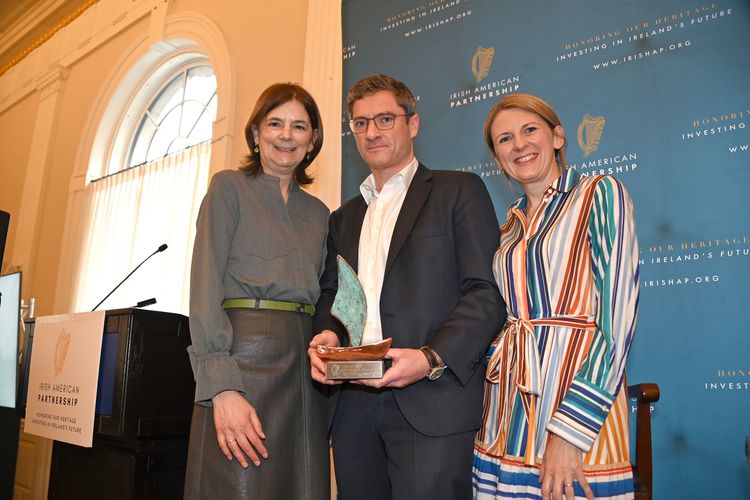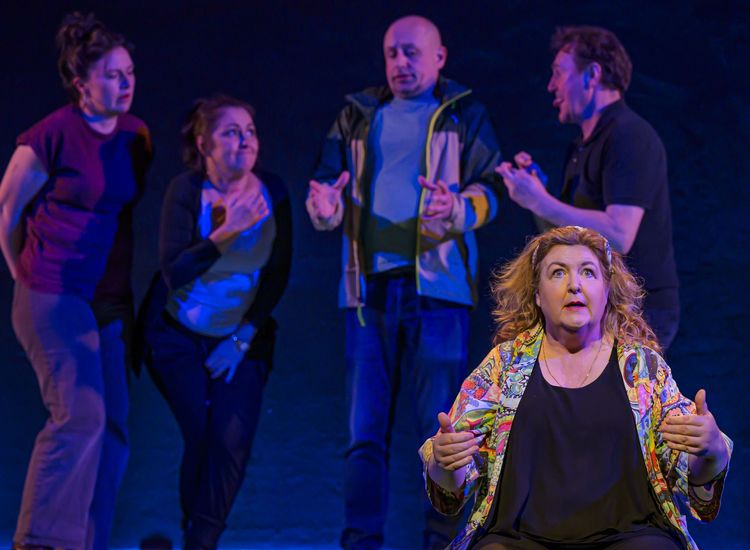Michael O’Chonfhlaola is the middle-period Joe Heaney in “Song of Granite,” an impressive, beautiful film, which tells the sean-nós singer’s story with a grand sense of poetry.
By Daniel Neely
In last week’s column I previewed “Song of Granite,” the dramatization of sean-nós singer Joe Heaney’s life that is being considered for an Academy Award nomination in the “best foreign language film” category. On Saturday, I attended the New York screening at NYU's Iris & B. Gerald Cantor Film Center and I have to say I was completely blown away. I believe it is an important film for Irish music because of the incisive way it has presented sean-nós song through Heaney’s story. But I also wonder if new ground hasn’t been broken with respect to how music performance can be mobilized in modern film. Regardless, it’s an essential must-see, not just for lovers of Irish music, but for people of Irish heritage and cinema buffs more broadly.
I should start by saying the movie’s cinematography is stunning. It was shot in black-and-white, which gives the film a timeless quality, but it’s the film’s careful camerawork that does much of the heavy lifting in terms of narrative direction. For example, Connemara is shown plainly in its expansive, lonesome beauty, England is given a hard, harsh cast, and New York is seen as a diverse place in constant motion. But careful camerawork ties each of these locations together with a sense of intimacy and limitless possibility that Heaney himself might have recognized.
The vignettes that depict Heaney’s private moments are steely and austere and suggest the difficulty of knowing a hard and hard-to-know man. There’s an overarching longing in here as well. Despite this, these moments are never without character and speak volumes. But what do they say? It’s up to the viewer. Director Pat Collins, notably, doesn’t dwell on the biographical facts of Heaney’s life. Indeed, many life events are left out, as this movie is not meant to be a conventional biopic. And yes, while there brief moments of documentary footage woven into the film, they’re carefully selected to reflect the general approach to cinematography and fit into the narrative seamlessly. Ultimately, the film Collins has created forces viewers to experience Heaney on fairly neutral terms and in the end leaves them with little more than an impressionistic sense of Heaney the person, which is something I understand might be just more than you would have had had you actually know the man in person.
The film’s most important element, and indeed the thing that stands at the narrative’s heart, is singing. The most remarkable aspects of this movie for me (and I write both as a trad musician and as an ethnomusicologist) were how well the director grasped the complexity and nuance of sean-nós singing and communicated it on the screen. The overall approach to cinematography was certainly a major element in how this came together, but the effect wouldn’t be so stirringly evocative were it not for the keen ethic Collins brought to the handling of the music. All of the film’s major performances were captured in the moment, meaning what you hear in the movie is what was performed during shooting. There does not seem to be any editing – much less any overdubbing – of individual performances at any point. This is an incredible achievement, but to capture the music’s power so effectively it could not have been done any other way. Other films about music should heed this example.
Readers who aren’t yet acquainted with traditional music should know that virtually every musician here is of unimpeachable reputation. Michael O’Chonfhlaola (middle period Heaney) and Pól Ó Ceannabháin (Joe’s father) are both accomplished singers and delivered mightily in their roles. Colm Seoighe is a brilliant and still developing young singer, and was perfect as young Joe. They’re native Irish speakers, all. There’s a breathtaking scene toward the middle of the film in a pub in which well-known singers Damien Dempsey and Lisa O’Neill each sing a song brilliantly. Their English-language songs create a fascinating counterpoint to those Heaney’s delivers in Irish.
The scene also includes a long, continuous shot of a group of musicians playing dance tunes. The players here are a murderers row of trad musicians, including Seamus Begley (button accordion), Cormac Begley (concertina), Cathal Haden (fiddle), Dermot McLaughlin (fiddle), Radie Peat (concertina, of the band Lankum), and Laurence Courtney (mandolin-banjo), and their music is utterly majestic. But the scene’s climax is the song O’Chonfhlaola delivers as he’s wound hands with Seamus Begley. It is a show stopper of a performance and one of the most soulful things you’re likely to see on the silver screen.
“Song of Granite” is an impressive, beautiful film. Collins has told Heaney’s story effectively, and has done so with a grand sense of poetry. However, in many ways the film is less about Heaney than it is a meditation about singing, tradition, and the Irish immigrant experience. There’s much to be taken from this film in this regard as well, especially since Collins has done so well to get the music exactly right. The action might appear calm and glassy on its face, but the music – the power of song – will quickly drag you into it’s depths. I cannot recommend it more highly – an absolute must see. “Song of Granite” will show in NYC at Film Forum Nov 15 - 28. Definitely check it out. For more information, visit songofgranite.oscilloscope.net.










